This post explains how to fix slow disk usage issues in Steam. If your games are downloading slowly in Steam despite having a fast internet connection, you might be having slow/low disk usage speed issues. This indicates a problem with your network or with the disk where you’re downloading the game. Sometimes, the issue may be triggered by glitches in the Steam servers.
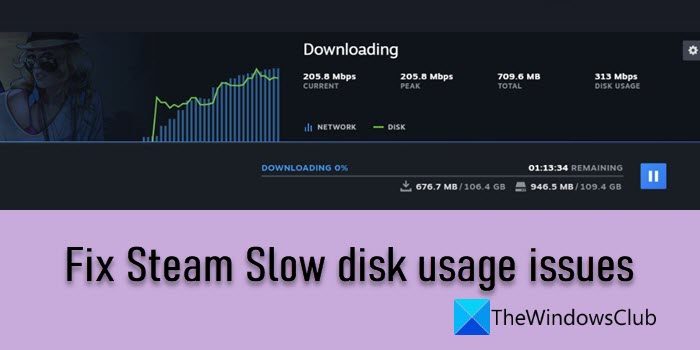
Steam disk usage refers to the disk space Steam takes up per second to write the data to a computer’s storage device (HDD/SDD), while a game is being downloaded. Under normal circumstances, the disk usage remains somewhere around the download speed of the game. But when the disk usage drops, the downloading may pause or resume randomly. This may result in extremely sluggish downloads via Steam. If you’re experiencing the same issue, you’ve come to the right place. In this post, we will discuss methods to get rid of slow disk utilization issues in Steam.
Fix Steam Slow disk usage issues
Before you start troubleshooting, reset your internet connection by restarting your modem/router or by unplugging and re-plugging your LAN cable. Then use the following solutions to fix slow disk usage issues in Steam on a Windows 11/10 PC:
- Set Steam to high priority in Task Manager.
- Clear Steam download cache.
- Change the download server location.
- Disable antivirus/firewall temporarily.
- Move the game to another drive.
Let us see these in detail.
1] Set Steam to high priority in Task Manager
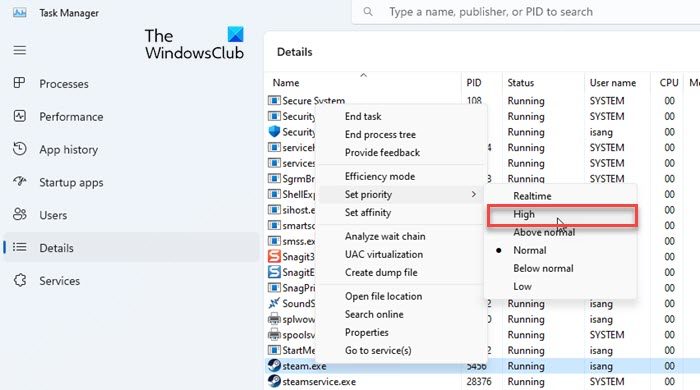
Setting Steam to high priority in the Task Manager app will ensure that your system resources will be allocated to Steam on a priority basis, allowing it to work at its full potential. Here’s how to do this on a Windows PC:
Right-click on the Start button icon and select Task Manager. Click on the Details tab in the left panel. Navigate to Steam.exe. Right-click on the process and select Set priority > High.
Now go back to the Steam client app and see if it makes any difference to the game download speed.
2] Clear Steam download cache
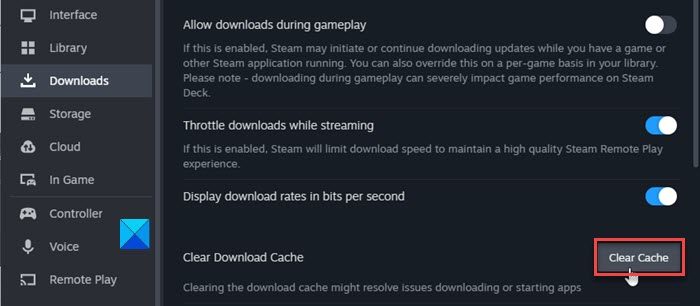
Clearing the Steam download cache can solve issues with games and apps that won’t run or download. Try clearing the Steam download cache and see if it helps.
Open the Steam client app and click on the Steam icon in the top left corner. Click on Settings. Then click on Downloads in the left panel.
In the right panel, click on the Clear Cache button next to the ‘Clear Download Cache’ option.
Restart the Steam client and see if the issue is fixed.
3] Change the download server location
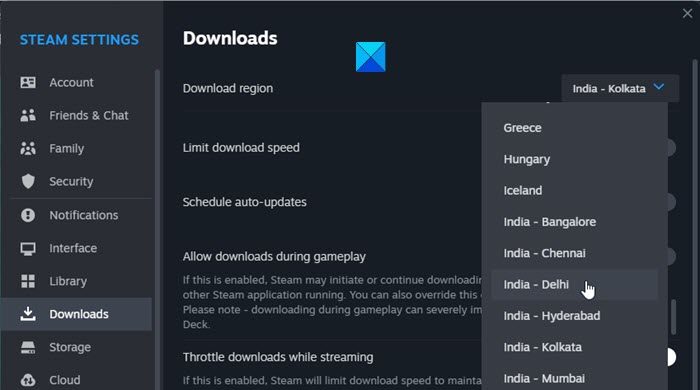
Slow disk usage issues may sometimes relate to Steam servers. When you run Steam, it determines your location and assigns you the nearest download server. If the server gets clogged, you may face slow disk usage issues. In such a case, changing the download server you’re connected to may fix the problem.
Go to Steam > Settings > Downloads. Select a different server using the dropdown next to the Download region option and see if it works for you. You may try changing 2-3 servers. If the issue persists, move to the next solution.
4] Disable antivirus/firewall temporarily
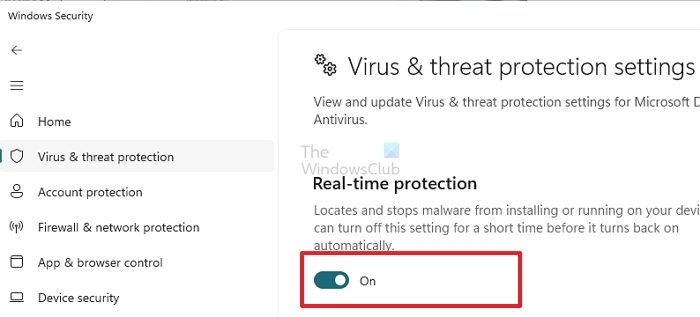
Your antivirus or firewall software may report Steam games as malicious software, causing issues with the disk writing process. Check this by temporarily disabling your antivirus or firewall. If it resolves the slow disk usage issue, you should re-enable the antivirus/firewall and add Steam to its list of ‘Exclusions‘.
5] Move Steam to another drive
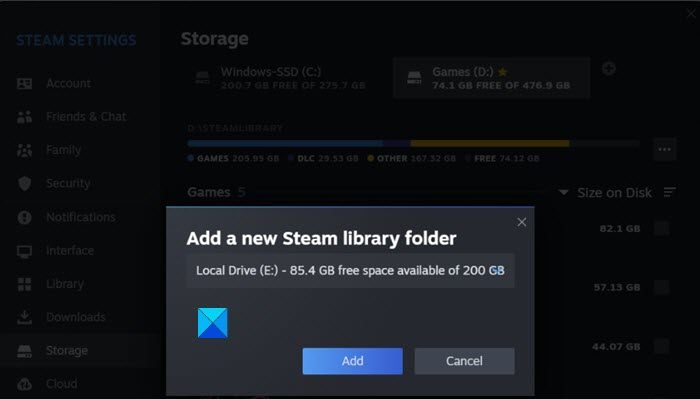
Steam games usually occupy a lot of space, making the drive fill quickly. This can eventually cause disk write issues in Steam. To fix this, you may create a new Steam Library on a different drive (preferably an SSD) and try downloading the game there. You may also move your entire Steam install to this new drive.
Exit the Steam client app and navigate to C:\Program Files(x86) in the File Explorer. Select the Steam folder and click on the Copy icon in the toolbar on top. Paste the Steam folder to the new drive. Rename the old folder to keep it as a backup (you might delete it later). Launch Steam from the new location and sign in again. Now try downloading the game to this new drive.
The above steps will move your Steam install to another drive. If you just want to move this specific game, add a new Steam Library folder to the new drive using Steam Storage Manager.
If none of the above solutions help, uninstall the Steam client and then reinstall the app. This would hopefully resolve the issue.
Read: How to downgrade Steam games to previous versions.
Steam patching slow disk usage
If Steam patching is showing slow disk usage and the update is taking longer than usual on your Windows PC, open Task Manager and end all Steam processes. Then restart Steam and try downloading the update again. Also, delete the Steam download cache. If you still experience the issue, you may need to upgrade your hardware (the patching times may actually be reduced by using an SSD).
How to speed up disk usage Steam?
If you see extremely low disk usage in Steam, you may speed it up using a few tips. Clear the download cache via Settings in the Steam client app, increase the bandwidth limit (or set it to no limit), and change the download region. You may also try updating your network drivers and see if it helps.
Read Next: Steam download stuck, not showing progress, or keeps restarting.